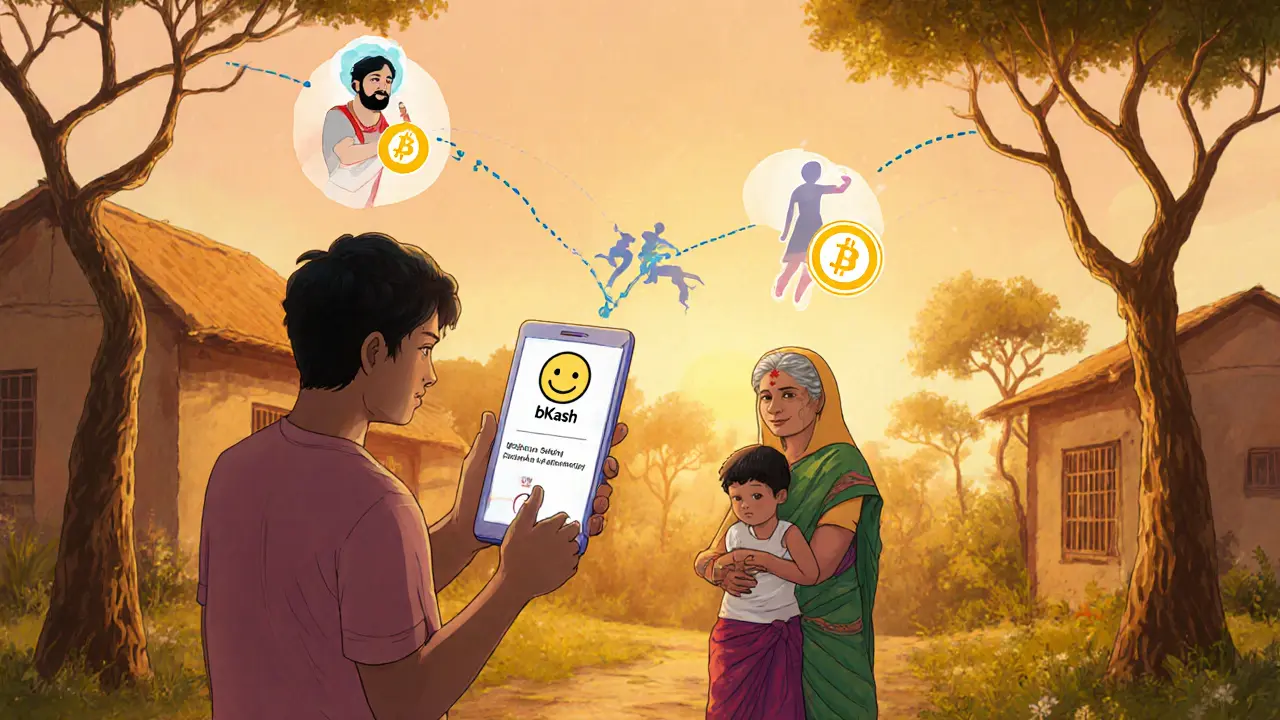Remittance Cost Calculator
Send Money to Bangladesh
Compare costs of traditional banking vs crypto remittances (Based on Bangladesh's 3.1 million users using stablecoins)
Enter an amount to see the difference
Based on 8-12% traditional fees vs <1% crypto feesWhy This Matters
3.1 million Bangladeshis use crypto for remittances despite the ban. Traditional fees cost 8-12% (up to $120 for $1,000), while crypto fees are often <1%.
Despite a total government ban on cryptocurrency, Bangladesh sits at rank 35 in global crypto adoption - ahead of countries like Germany, Canada, and Australia. How is this possible? The answer isn’t in speculation or gambling. It’s in survival.
3.1 Million People Are Using Crypto Anyway
The Bangladesh government officially banned cryptocurrency trading, exchanges, and even holding digital assets in 2021. The central bank warned banks to cut off services to anyone involved in crypto. Fines were threatened. Arrests were rumored. Yet, by 2025, verified crypto users in the country hit 3.1 million. That’s nearly 2% of the entire population. These aren’t traders chasing Bitcoin moonshots. These are factory workers in Dhaka, garment exporters in Chittagong, and nurses in Saudi Arabia sending money home. They’re using stablecoins - mostly USDT and USDC - to bypass broken banking systems and sky-high fees. Traditional remittance channels charge 8-12% to send $200 from the Middle East to Bangladesh. Crypto transfers? Often under 1%. And they settle in minutes, not days.How Do They Even Access It?
There are no licensed crypto exchanges in Bangladesh. No Binance or Coinbase offices. No ATMs. No apps approved by the government. So how do people buy crypto? They use peer-to-peer (P2P) platforms like Paxful, LocalBitcoins, and Binance P2P - accessed through VPNs. They trade with local traders who accept bank transfers, mobile money (bKash, Nagad), or even cash drops in public parks. Some use international wallets like Trust Wallet or MetaMask, funded through third-party intermediaries. Verification? Yes, many users go through KYC on global platforms. They use real names, real IDs, real bank accounts - just not ones tied to Bangladeshi banks. They rely on foreign-registered accounts or accounts held by relatives abroad. It’s not perfect. People get scammed. Some lose money to fake traders. But the system works because the need is real.Why Stablecoins, Not Bitcoin?
Bitcoin’s price swings make it useless for daily remittances. If you send $500 worth of BTC to your family and it drops 15% by the time they cash out, they’re worse off. Stablecoins fix that. Each USDT is pegged to $1. No volatility. Just speed and low cost. A 2025 Chainalysis report found that 89% of crypto transactions in Bangladesh involve stablecoins - almost all for remittances. Only 6% are for trading. The rest? Savings and small business payments. This isn’t a crypto bubble. It’s a financial workaround. People aren’t betting on crypto. They’re betting on their families getting paid on time.Regional Comparison: Bangladesh vs. India and Pakistan
India, with its 140 million crypto users, leads Asia. Pakistan, with 18.2 million users, ranks third globally. Bangladesh sits between them - not in size, but in resilience. India has a gray zone: crypto isn’t illegal, but banks block transactions. Pakistan has no ban - but rampant inflation pushes people to crypto as a store of value. Bangladesh? No legal gray zone. No inflation-driven panic. Just a strict ban - and people still found a way. What’s different? Bangladesh’s crypto use is more focused. Less hype. More utility. Less speculation. More survival.The Hidden Infrastructure: Mobile Money and Underground Networks
Bangladesh’s real crypto backbone isn’t the internet - it’s bKash and Nagad. These are mobile money platforms used by 90% of the population. Even people without bank accounts use them. So when someone in Dubai sends USDT to a trader in Dhaka, the trader converts it to BDT via a P2P buyer who pays through bKash. It’s a chain: Overseas worker → USDT → Local P2P seller → bKash → Family’s phone. No bank involved. No paperwork. No waiting. No $15 fee. This system has grown organically. No one planned it. No startup built it. It emerged because the old system failed.
